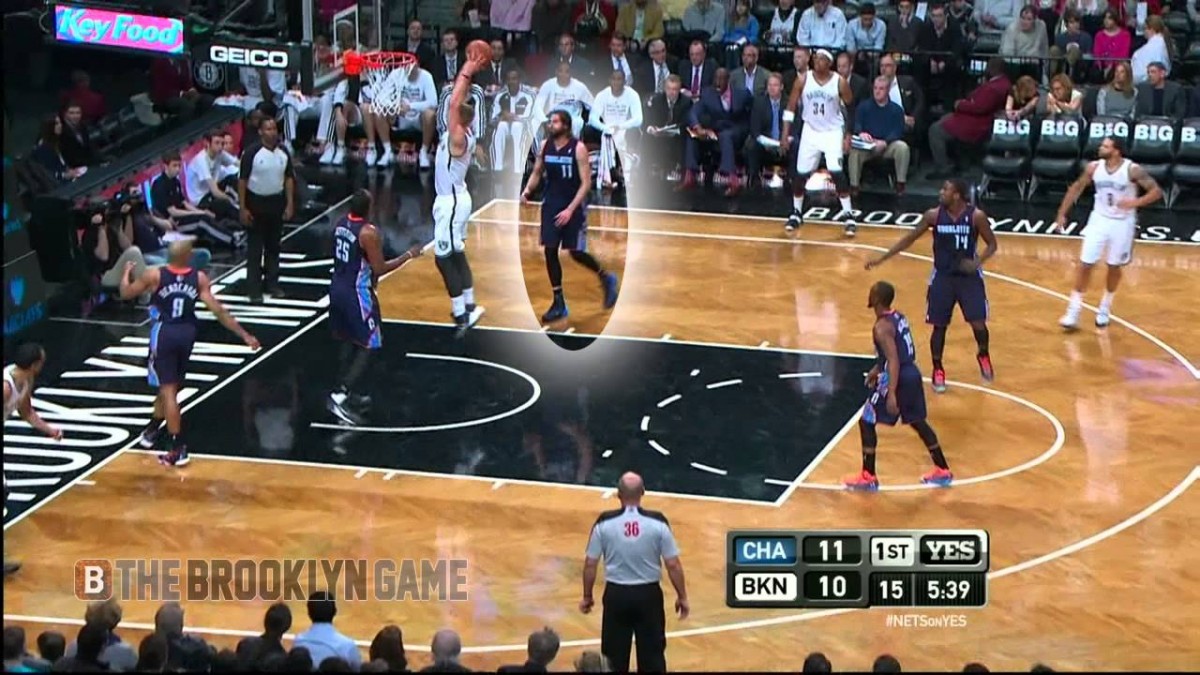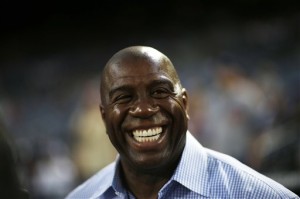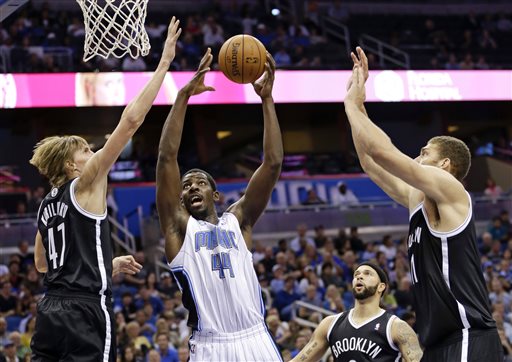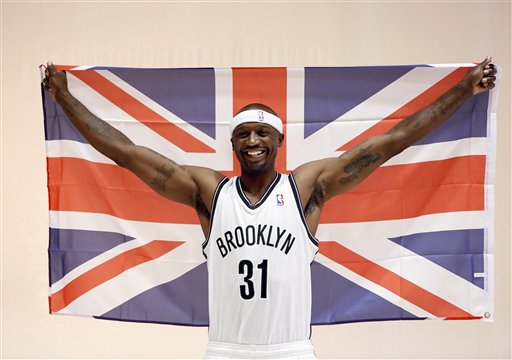Running an offense
The knock on Shaun Livingston early in his career is that he should have dominated, that he had the talent and the basketball IQ to take over any game, but too often deferred to teammates. Mike Dunleavy, his former coach in Los Angeles, once said that Livingston should flirt with a triple-double every game, despite him never averaging double-digits in any statistical category.
Scouts called him an elite point guard prospect with explosive athleticism and Jason Kidd’s vision. Now, with the opportunity to learn under Kidd, he says the coach has helped him manage a game, from new ways of getting teammates involved all the way down to handling referees. “Everything is strategized,” Livingston said. “There’s a method to everything. It gives you kind of a different angle to look at the game… The first seven, eight years, you don’t look at it through those lenses. it kind of opens you up.”
Livingston predicates his game on anticipation, reading an offense or defense and weighing the possible outcomes. In a pick-and-roll league, that means breaking down the whole floor. “It’s really about seeing where the help is going to be,” Livingston explained. “There’s one-on-one basketball, but teams try to eliminate that by playing team defense. So when playing team defense, you’re trying to help another guy. So if everybody’s pulling each other and helping on the string, then you’ve got to find out where the right play is. Who’s going to be open? Sometimes it might be you on the shot, sometimes it might just be the hockey assist. Sometimes it might be the home run play. But it’s about making the right play. That’s contagious.”
Hear him break it down in his own words below:
Livingston’s narration: The hardest part is just deciphering where the help is going to be. Usually a team (defense) likes to keep the ball down on the sidelines, so that’s why he jumps and gives me the lane, because big Al’s behind him. So once he does that, now it’s two people on the ball right there. So where’s the help gonna be? Someone else has to pick up his man. So that was supposed to be here on the bump, and he was supposed to catch him low. That would be what would happen. But because he didn’t catch him low, now (McRoberts) is the man that’s helping. If he’d caught him, it might be here on the skip pass to Pierce. If he rotates, then it might be out here. If he rotates, then it just might be back to D-Will or it’s my play to make a shot. It happens fast, and it’s a lot to decipher, but the more you get repetition, the more you just see it. It just becomes natural as far as reading where the help is gonna be on the court.
Anatomy of an amazing dunk
Livingston’s Brooklyn apex came in a double-overtime victory over the defending champion Miami Heat on January 10th: in his career-high 51st minute, Livingston darted left on Heat sophomore guard Norris Cole, appearing to attack the rim head-on, before whirling back right, spinning into the lane and levitating for a two-handed flush. The dunk put the Nets up 104-93 with under 90 seconds left, sealing the victory.
But how did he pull off such an easy dunk? The Heat have one of the league’s best defenses, and don’t allow guards to penetrate. In an instant, Livingston went from what looked like an ordinary head-on drive to a graceful spin and finish. Livingston credits a myriad of factors: his own ability to read Cole’s body language, a defensive strategy teams employ against him that he feels gives him an advantage, and his team’s spread-out system.
Hear him break it down in his own words below:
Livingston’s narration: When the defender cuts me off. When I’m seeing him leaning. I see right there, he gets ready to lean for the reach, and he reaches with his outside hand, so from there, his balance is not going to be able to bring him back to where I’m going. Usually if they reach, they’re not going to be able to recover. If they don’t reach, then he’s going to try to stand me up and bump me. Then I’m low in the lane by that time.
That’s the thing. Guards want to go under, teams want to go under me because my perimeter or lack of shooting, but what they don’t realize is that once they go under, I’m so low, now I’m at my spot. It’s either make or miss, and if you help, now we have the kick-out for the shooters. You’ve got shooter, shooter, shooter. And they’ve all hit shots. So again, that’s the system that’s in place that allows me to thrive. Maybe if there weren’t shooters there, the lane would be clogged, and maybe it’d be a hard time finishing.
Taking on LeBron
The spin was the first time he’d made a game-changing play in crunch time against the Miami Heat this season. Two months later, with the Nets up 96-95 with 3.5 seconds left, the Heat had another chance to earn a victory.
But on the inbounds, the Nets switched Livingston to four-time MVP LeBron James, and after the two tangled, Livingston swatted away the inbounds pass with his right hand, running out the clock and sealing the third Nets win in three tries against the defending champs.
It’s no misnomer: since January 1st, the Nets lead the league in opponent turnover percentage, with Livingston the team leader in steals and fifth on the team in blocks.
In close and late situations, teams tend to tighten up in their man defense. “Nobody wants their man to make the shot at this point in the game,” Joe Johnson told me in October when talking about his own clutch shooting.
But the Nets, thanks to their small & long hybrid lineups and a reliance on trust, don’t have any issues sticking to their defensive principles, which allowed Livingston to get into the play and make the game-saving swipe.
Hear him break it down in his own words below:
Livingston’s narration: Switch. Switch everything. We talked it out, and, you think, ‘okay, nobody’s gonna switch on LeBron, stay home.’ But in a game like this, there’s so many picks and screens and misdirections, and late-game, people set screens to where you don’t really get called for offensive fouls. The refs don’t want to make a call that determines the game at the end of the game. You want to play it out. So what makes it easier is for us to switch screens, and play everybody straight up. So it’s a gamble, because I’m on the outside and he tries to hold me off and throw on the inside. Maybe if he would’ve led him a little bit more, he might’ve had him, but because of my length, I was able to get a hand on the ball and tip it. If he does get this pass and (Joe) comes in, now I have to run to Ray Allen and try to run him off the line.
I didn’t want to foul, so I tried to get my arm around him, and it happened to spin my body, and my momentum carried me to be able to tip the ball. See, right now. See how it’s kind of like a quick hold, but it’s like he’s holding me, I’m holding him, and then once we go for the ball we both let go.
On his absurd effectiveness in the post
Livingston’s short jumper accounts for most of his short shots that aren’t dunks or layups, and he’s shooting an efficient 49.2 percent in the paint on shots outside of the restricted area, over eight percent above the league average. Of his 200 field goal attempts between 5 and 14 feet this season, only three have been blocked.
It’s a big reason why Livingston ranks first — yes, first — in the NBA in points per possession in the post, scoring an absurd 60.3 percent of the time when he gets a look inside.
I wanted to know how he gets free for those looks, post-up or pick-and-roll, and he says it comes down to two factors: how quick his move is, and how he deciphers the defense’s reaction. Once he finds his position, he can use his length to make his decision.
Hear him break it down in his own words below:
Livingston’s narration: From here, getting a quick move, and now just taking my time. Once I make the quick move, the quick move is just to get a step on the guard. Usually the point guard is going to be faster or quicker, just because of his size. That’s what point guards are. So for me, just using your first step. I played with Sam Cassell, I watched him play at 36 years of age, and the way he was able to score, it was just all about positioning on the court. He can get a shot off over anybody, which, because of my height and length I can too, but it’s just about balance and it’s about getting to your spot on the court. Once I’m by the guy, I would either have the lane, but if somebody’s right there, you have the pull-up. That’s just touch.
You’ve got Blatche for the dump-off, or if this man comes low, you’ve got the skip pass to the corner. It’s all just based on who picks you up.
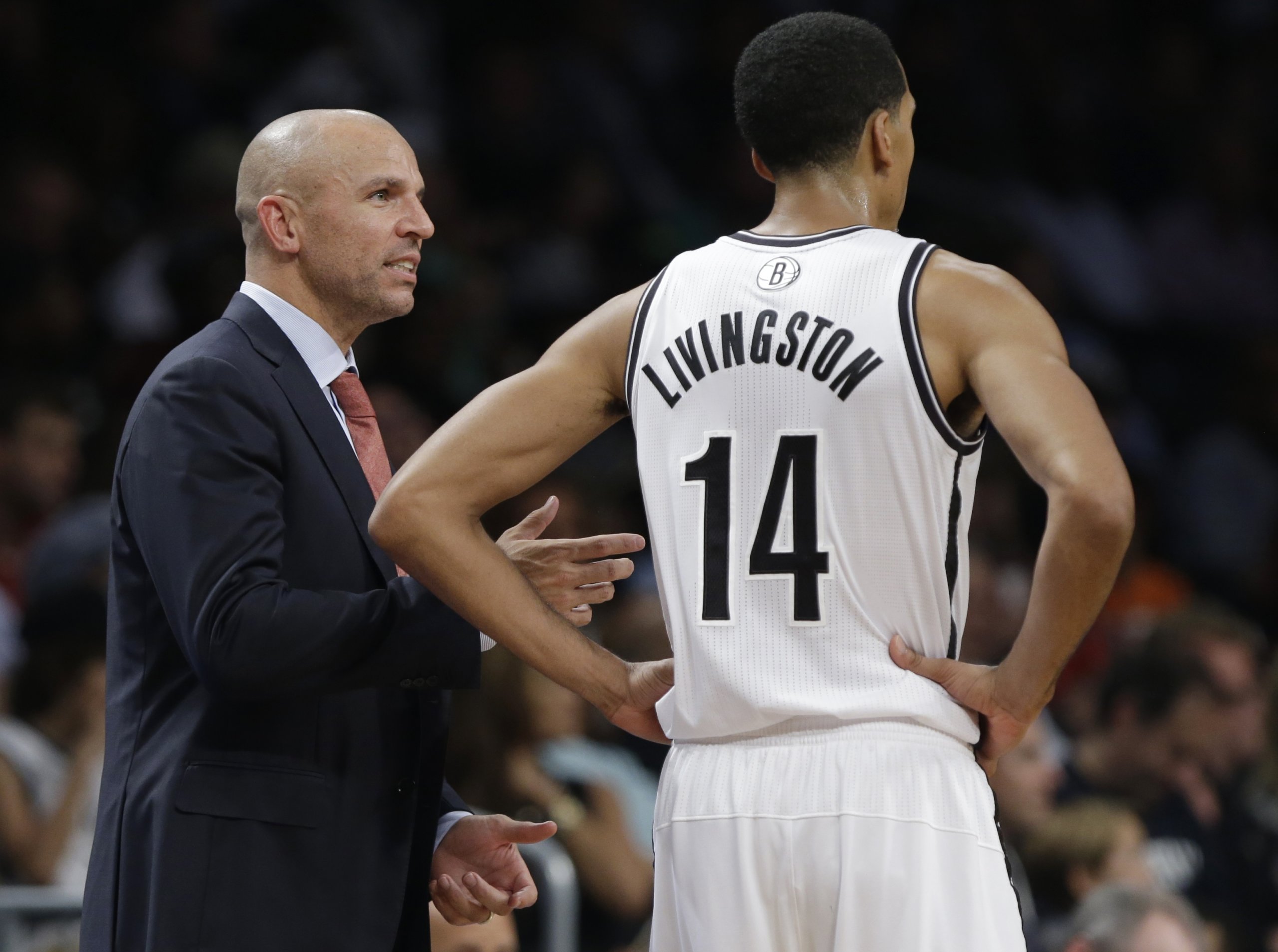
Livingston is no longer the 16-year-old wunderkind scouts drooled over, nor the 21-year-old struggling with the brink of stardom. At 28, Livingston’s in a prime no one expected, elevating from an unheralded backup on a one-year minimum contract to the top offseason priority for Nets general manager Billy King. “He’s been pretty successful for us,” King said. “He’s helped us win games.”
The Nets turned their season around in 2014, going from a 10-21 record through December 31st to an Eastern Conference-best 29-12 in the new year. Though “old year” and “new year” sound like arbitrary demarcators, the date matters: among other changes, Livingston became a full-time member of the starting lineup on January 2nd.
His numbers won’t leap out at you: since he became a full-time starter, Livingston’s averaged 9.2 points, 3.8 rebounds, and 3.1 assists in 28.4 minutes per game. But he’s acted as a hybrid between a distributing point guard, a lanky, mid-range-heavy shooting guard, and a defensive small forward in Jason Kidd’s starting lineup, and every Nets starter has a better plus-minus rating with Livingston on the court than on the bench.
“(He’s) incredible,” Kidd said of Livingston. “It’s a great story all the way around. He’s a great person on and off the court and he deserves everything that he’s recognized for. He sets the table, he’s guarded the best player on the other side, … I couldn’t ask for a better player to coach and to be around.”
To some, it’s astounding that Livingston’s on the court at all. In 2007, Livingston endured one of the worst injuries in basketball history, tearing his anterior cruciate ligament (ACL), tearing his posterior cruciate ligament (PCL), tearing his lateral meniscus, spraining his medial collateral ligament (MCL), dislocating his patella, and dislocating his tibia-femoral joint. His leg still requires maintenance to this day: rest, ice, weights, and conditioning.
His injury and resultant rehabilitation are the primary story of his career, a story he’s trying to rewrite. He saw a successful NBA future as the finish line from day one.
But it all started with Peoria, the hometown he returned to twice this season to meet with families devastated by a recent tornado. “I just want to make my family proud, I want to make my city proud, just the people that always supported me, prayed for me, loved and cared about me,” Livingston espoused. “You just kind of want to do it for them. Do it for myself, but also do it for them.
“They put a lot into me, and it just feels good to give it back,” he continued. “Being where I’m from, it’s hard to quit. That’s just… I don’t know. It’s hard to live with.”

